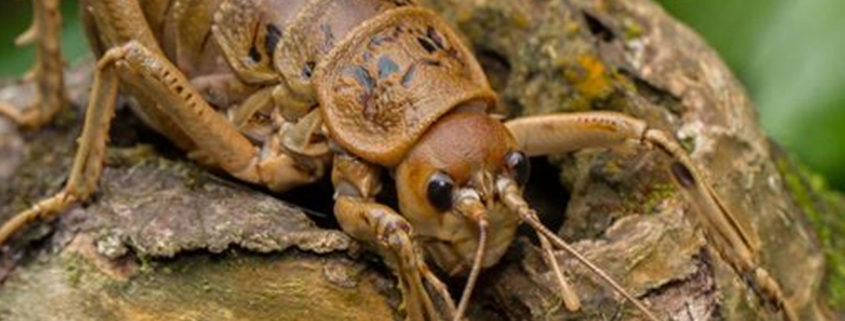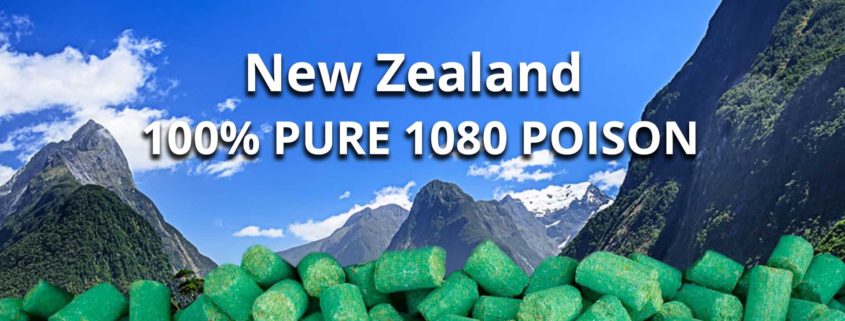1 August 2019
Mr Mike Slater
Deputy Director-General (Operations)
Department of Conservation
Conservation House
P.O. Box 10420
Wellington 6143
Dear Mr Slater
Re: Poisoning of Arthurs Pass National Park
You have given consent for the business “Vector Control Services” to aerially poison Arthurs Pass National Park, including places that have not been poisoned before, primarily to control rats in order to protect kakariki.
Your department’s most recent monitoring indicates that according to its own target, no poisoning is necessary.
Furthermore the consent application (supplied by OIA request 20/06/19) gave you no substance upon which to base your decision. It failed to reference any of its claims of benefit. It also failed to discuss relevant risks and unknowns (e.g. 1080 persistence in cold water) and known adverse effects such as sub-lethal damage (e.g. birth defects, reproductive damage). It ignores many relevant details regarding the ecology of the area and responses to aerial poisoning.
Because of these deficiencies, your consent breaches the Hazardous Substances and New Organisms Act 1986 (in at least Sections 5, 6, 7 and 95A (Part 3)).
Details:
- The consent provided is to bring rat tracking to below 5%. The most recent rat monitoring was in May. Rat tracking was low, averaging 2.7% (average tunnels tracked/night) (data supplied via OIA request 20/6/19).
- No attempt has been made to assess the amount of food now available to fuel an anticipated rodent plague. Anecdotal reports are that due to very dry autumn conditions, beech seeds shrivelled up and there is little food. In previous studies beech masting was assessed using collected seed (Griffiths & Barron, 2016), however no such effort seems to have been made despite the enormous scale of the proposed poisoning.
- Contrary to the consent application’s claim, there is no certain relationship between beech masting and rat numbers (Brown et al., 2015; Griffiths & Barron, 2016). Usually in beech forests, if rodents do increase after masting, it is mice rather than rats (Ruscoe & Murphy, 2005). 1080 is not usually effective against mice (Fisher & Airey, 2009).
- Aerial 1080 operations result in increased mouse tracking, then very high numbers of rats start to build up after a few months after its use (Ruscoe et al., 2011; Griffiths & Barron, 2016) because they are well equipped to take over the unused resources left by the poisoned animals. Rats can develop tolerance to 1080 (ERMA 2007, ERR p. 535). They are generalist feeders and very fast breeding so they are set to be the last animal thriving after repeated poisoning campaigns (Kisner, 2016).
- 1080-poisoned kakariki have been found (Fairweather et al., 2015). There are only a few hundred of this species left, so risking poisoning of any individuals is irresponsible.
- One of the few monitored species, the kea, suffers 12% losses in every operation on average. It is claimed by DoC that losses are greatest where kea are familiar with people (Kemp et al., 2018). If so losses should be high in this heavily used national park. Also it is winter, meaning that kea are hungry and tending to feed on the ground, at lower altitudes (Jackson, 1960), so the chances of eating poisoned bait are very high. To make matters worse, two exemptions to the Kea Code of Practice made in the consent application are being granted: blood is apparently to be added as a deer repellent and baits are to be sown at 3 kg/ha (double density) in kakariki areas. There is an unknown number of kea remaining in the wild but it may be less than 1000 (Bond & Diamond, 1992; Harper, 2012; Roy, 2016).
- Most native species have not been monitored, therefore 1080 poisoning effects on populations and ecology are unknown (Whiting-O’Keefe & Whiting-O’Keefe, 2007; Veltman et al., 2014; Brown et al., 2015; Pollard, 2016).
- There is no study showing any benefits of aerial 1080 poisoning to populations of birds. One of the two (only) studies cited that purportedly show this used mixed pest control techniques and unreliable measurement (in the Landsborough Valley) and the other merely made comparisons within years of an ingrained 1080 cycle where rats rapidly repopulated poisoned areas (in the Tongariro kiwi sanctuary) (Pollard, 2019).
- The consent application claims that nesting kea will benefit from the poisoning due to reduced stoat numbers. But scientists had previously concurred that stoats do not normally bother nesting kea (Jackson, 1969; Elliott & Kemp, 1999). Moreover, stoats are not reliably killed by 1080 and survivors turn to eating native birds, after their rat food supply is suddenly poisoned off (King & Murphy, 2005).
- The consent application claims that kea show increased “nesting success” after 1080 which shows that populations increase. But “nesting success” increases after many individuals in a group have been killed, because those remaining have increased resources (Nilsson, 1984; Arcese & Smith, 1988; Eason et al., 2011). It is not a measure of population size. Furthermore there is no credible scientific backing to the kea nesting success claim (Kemp et al., 2015, unpublished; Kemp et al., 2018; Pollard, 2017).
- Currently trapping for stoats is being carried out in the area. Because stoats are the rat’s main predator, this trapping may increase rat numbers. More thoughtful ground-based control can achieve desired low levels of pests, even if they do rise following masting (Elliot & Suggate, 2007). The area already has many tracks, huts, volunteers and trapping networks.
- Kakariki numbers have already suffered greatly at the hands of DoC, through trapping of stoats leading to rat plagues (Elliott & Suggate, 2007), nest interference and egg stealing (DoC 2002a; 2002b; 2003; Ellott & Suggate 2007). Different, independent, expertly advised management of this species is needed urgently.
- The consent application erroneously states that 1080 is of “medium humaneness” to possums. In fact the research on this topic did not state it was humane at all. It stated that 1080 had severe effects lasting for hours; because of this it was rated as having an “intermediate welfare impact”, compared to cyanide (which causes rapid loss of consciousness and death) and brodifacoum (which has a severe to extreme impact for days to weeks) (Beausoleil et al., 2010).
- Many serious risks of using 1080 and a lack of knowledge on the effects of 1080 were described in a comprehensive report by the Environmental Risk Management Authority in 2007 (ERMA Review: visit https://1080science.co.nz/1080-data-quality/).
- Persistence of 1080 has been very poorly quantified, but it is known to be greater in cool conditions, dry places, and substrates lacking the right biological conditions (e.g. sterile water, types of soil). The ERMA review noted that degradation rates in NZ field conditions were unknown (https://1080science.co.nz/biodegradation-in-soil/). In contaminated animals, it was still present when short-term studies ended (live ants, trout, eels, koura; dead deer) and further studies have not been carried out. Breakdown products are toxic (including fluoromethane and fluorocitrate) and not well understood (Fisk et al., 2007, review in ERMA, 2007; Northcott et al., 2014).
Please will you confirm that you have received this letter and have considered the topics raised? I trust that given the demonstrable lack of reason, thought or legality that underlie the poisoning operation it will be cancelled and the deadly bait will be disposed of as safely as possible.
Yours sincerely

Dr Jo Pollard (BSc (Hons), PhD)
References:
Arcese, P., Smith, J.M., 1988. Effects of population density and supplemental food on reproduction in song sparrows. Journal of Animal Ecology 57: 119-136.
Beausoliel, N., Fisher, P., Warburton, B., Mellor, D., 2010. How humane are our pest control tools? (09-11326). MAF Biosecurity New Zealand Technical Paper no: 2011/01. 149 pp.
Bond, A., Diamond, J., 1992. Population estimates of Kea in Arthur’s Pass National Park. Notornis 39: 151-160.
Brown, K., Elliott, G., Innes, J. & Kemp, J., 2015. Ship rat, stoat and possum control on mainland New Zealand. An overview of techniques, successes and challenges. Department of Conservation report. 40 pp.
DoC, 2002a. Rare Bits 44, April 2002
DoC, 2002b. Rare Bits 45, June 2002
DoC, 2003. Rare Bits 49, June 2003
Eason, C., Miller, A., Ogilvie, S., Fairweather, A., 2011. An updated review of the toxicology and ecotoxicology of sodium fluoroacetate (1080) in relation to its use as a pest control tool in New Zealand. New Zealand Journal of Ecology 35(1): 1-20.
Elliott, G., Kemp, J., 1999. Conservation ecology of kea (Nestor notabilis). WWF-NZ Final Report 1 August 1999, 64 pp.
Elliott, G., Suggate, R. 2007. Operation Ark. Three year progress report. Department of Conservation.
ERMA, 2007. Environmental Risk Management Authority’s Reassessment of 1080, Application HRE05002.
Fairweather, A., Broome, K., Fisher, P., 2015. Sodium fluoroacetate pesticide information review. Department of Conservation Report Docdm-25427. 103 pp.
Fisher, P. & Airey, A.T., 2009. Factors affecting 1080 pellet bait acceptance by house mice
(Mus musculus). Department of Conservation DOC Research & Dev Series 305-308 Feb-March.
Griffiths, J.W., Barron, M.C., 2016. Spatiotemporal changes in relative rat (Rattus rattus) abundance following large-scale pest control. New Zealand Journal of Ecology 40(3): 371-380.
Harper, P., 2012. DOC shocked five Kea shot dead. Nestor Notabilis 6: 24.
Jackson, J.R., 1960. Keas at Arthurs Pass. Notornis IX: 39-58 .
Jackson, J.R., 1969. What do keas die of? Notornis 16: 33-44.
Kemp, J., Cunninghame, F., Barrett, B., Makan, T., Fraser, J., Mosen, C., 2015, unpublished. Effect of an aerial 1080 operation on the productivity of the kea (Nestor notabilis) in a West Coast rimu forest. Department of Conservation report. 15 pp.
Kemp, J.R., Mosen, C.C., Elliott, G.P., Hunter, C.M., 2018. Effects of the aerial application of 1080 to control pest mammals on kea reproductive success. New Zealand Journal of Ecology 42: 158-168.
King, C. & Murphy, E., 2005. Stoat. Pp. 204-221. In. C.M. King (Ed). The Handbook of New Zealand Mammals (2nd Edition). Oxford University Press, Melbourne.
Kisner, J., 2016. Man V. Rat: Could the long war soon be over?
https://www.theguardian.com/science/2016/sep/20/man-v-rat-war-could-the-long-war-soon-be-over
Nilsson, S.G., 1984. The evolution of nest-site selection among hole-nesting birds: The importance of nest predation and competition. Ornis Scandinavica 15: 167-175.
Northcott, G., Jensen, D., Ying, L., & Fisher, P., 2014. Degradation rate of sodium fluoroacetate in three New Zealand soils. Environmental Toxicology and Chemistry 33: 1048-1058.
O’Donnell, C.F.J. & Hoare, J.M., 2012. Quantifying the benefits of long-term integrated pest control for forest bird populations in a New Zealand temperate rainforest. New Zealand Journal of Ecology 36: 131-140.
Pollard. J.C., 2016. Aerial 1080 poisoning in New Zealand: Reasons for concern.
https://www.researchgate.net/publication/308712508_Aerial_1080_poisoning_in_New_Ze aland_Reasons_for_concern 17 pp.
Pollard, J.C., 2017. Response to the Department of Conservation’s reply to “Aerial 1080 poisoning in New Zealand: reasons for concern”. 17 pp.
Pollard, J.C. 2019. https://1080science.co.nz/science-against-1080/
Ruscoe, W., Murphy, E., 2005. Pp 204-221. In King, C.M. (Ed.). The Handbook of New Zealand Mammals (2nd Edition). Oxford University Press, Melbourne. 610 pp.
Ruscoe, W.A., Ramsey, D.S.L., Pech, R.P., Sweetapple, P.J., Yockney, I., Barron, M.C., Perry, M., Nugent, G., Carran, R., Warne, R., Brausch, C. & Duncan, R.P., 2011. Unexpected consequences of control: Competitive vs. predator release in a four-species assemblage of invasive mammals. Ecology Letters 14: 1035-1042.
Roy, E.A., 2016. New Zealand kea, the world’s only alpine parrot, faces extinction
https://www.theguardian.com/world/2016/sep/21/new-zealand-kea-the-worlds-only-alpine-parrot-faces-extinction
Ruscoe, W.A., Ramsey, D.S.L., Pech, R.P., Sweetapple, P.J., Yockney, I., Barron, M.C., Perry, M., Nugent, G., Carran, R., Warne, R., Brausch, C., Duncan, R.P. 2011. Unexpected consequences of control: Competitive vs. predator release in a four-species assemblage of invasive mammals. Ecology Letters 14: 1035-1042.
Smith, D., Jamieson, I.G., 2003. Movement, diet, and relative abundance of stoats in an alpine habitat. New Zealand Department of Conservation Science Internal Series 107, 16 pp.
Veltman, C.M., Westbrooke, I.M., Powlesland, R.G. & Greene, T.C., 2014. A principles-based decision tree for future investigations of native New Zealand birds during aerial 1080 operations. New Zealand Journal of Ecology 38: 103-109.
Whiting-O’Keefe, Q.E., Whiting O’Keefe, P.M., 2007. Aerial Monofluoroacetate in New Zealand’s Forests. An appraisal of the scientific evidence. http://1080science.co.nz/wp-content/uploads/2016/06/Whiting-Okeefe-2.pdf 88 pp.











